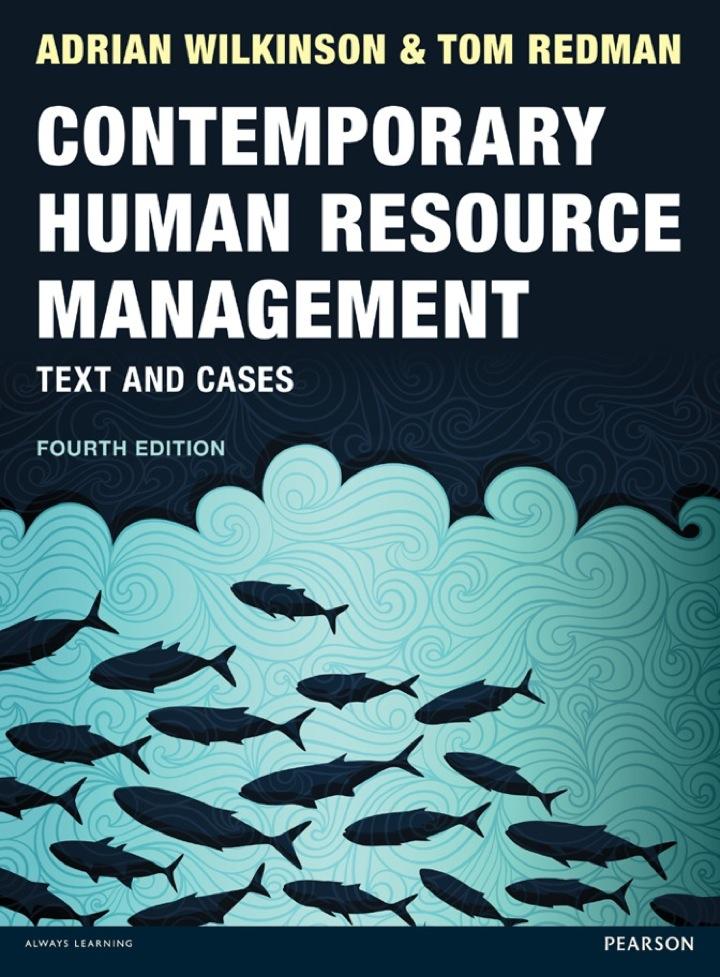EngCo is a large UK headquartered engineering company which operates on a worldwide basis. It is structured
Question:
EngCo is a large UK headquartered engineering company which operates on a worldwide basis. It is structured into four main divisions and employs in the region of 39,000 people, located in 50 countries across the globe. Approximately 60 per cent of their workforce are located in the UK and are distributed across eight main sites. The company’s workforce is predominantly male
(only about 15 per cent of the workforce is female) and most are employed on a full-time, permanent contract.
The majority of employees work a traditional 39-hour week, based around standard working times. Many employees have long service records and a significant proportion have never worked for any other employer.
Here we examine the implementation of a new policy on flexibility, Smart Working, at one of the UK workplaces.
In recent years the company has become more concerned with the diversity of the workforce and has introduced a number of policies designed to attract a broader spectrum of employees. There has also been a growing recognition of the importance of work–life balance to employees and the need for the company to respond to this. As such they introduced a flexible working policy a few years ago, allowing employees to request flexible working arrangements (reduced hours, remote working, different hours etc.) in order to help them deal with the needs of their work and non-work lives more effectively.
The nature of the company’s business means that there are ‘ebbs and flows’ over time in the level of activity throughout the company. Historically, this had tended to mean that the company used significant amounts of overtime working, in order to accommodate the
‘peaks’ in activity. (Beyond this some commentators suggested that evening and weekend overtime had become institutionalised in parts of the company and this represented a significant cost for the business.)
However, in addition to the peaks, there were also
‘troughs’ in activity and during these quieter times employees, although present during normal working hours, were less occupied and therefore less productive. In an attempt to reconcile these variations in workload and reduce the cost of overtime, the company developed a new policy, Smart Working, which was also designed to give employees more control over their working time and help them improve their work–life balance.
The principal aim was to achieve greater flexibility and efficiency by moving from an environment which was attendance-driven, to one with an emphasis on performance delivery. This was seen as central to the company’s strategy and acceptance of this new way of working was tied to future investment at the UK sites. The policy had been agreed with the trade unions representing the workforce and was being rolled out across the UK.
It was designed to reduce overtime costs by scheduling employees to work additional time at peak periods, but rather than paying them for this time, they would be able to recoup it at other less busy times. TOIL (time off in lieu) accounts were set up for employees so that a record would be maintained of time owing to each employee and which could be taken off at a later date. Recognising that the end of regular overtime would result in an income loss for some employees, the policy was introduced alongside a 6 per cent pay increase. This was seen by some as effectively incorporating overtime into basic pay.
In essence, Smart Working allows managers to match the supply of labour more closely with current workload. In practice, managers agree output targets with employees, or in some areas with self-directed work groups, for a set period of time. The thinking behind this was to move from a system which was time-based to one which is performance-based. The employee or work group then decide how the time resources available to them need to be used in order to achieve these targets. If in peak times employees need to work longer than their normal hours and/or needed to come in at weekends, this additional time can then be
‘banked’ and taken off when the workload is less high.
In addition, a flexitime system was introduced which removed the traditional starting and finishing times. Symbolically, this resulted in removal of the buzzer which signified the start and end of the working day across the workplace. The flexitime system is built around core hours (11.30–14.30) when all employees are required to be at work, but outside that period employees can choose start and finish times and these can be varied according to individual employee preferences.
In order to launch this new approach to working a series of training events was set up both for managers and for employees to help them understand the working of the scheme and how it was being implemented.
On the whole, employees reported that they understood the scheme and that the regulations governing how it worked were clear. There was also a general view that it had been implemented fairly. The trade unions, who were involved in negotiating the agreement, also monitored its implementation to ensure that it was being run fairly........
Question
1 To what extent do you think employer and employee desires for flexibility can be reconciled by a scheme such as this one?
2 Are there certain circumstances that might make this more likely?
3 As a manager reviewing the introduction and implementation of this policy, what recommendations would you make to move the policy forward?
Step by Step Answer:

Contemporary Human Resource Management Text And Cases
ISBN: 9780273757825
4th Edition
Authors: Tom Redman, Adrian Wilkinson





